
How to Use ESP32 Devkit V1: Examples, Pinouts, and Specs
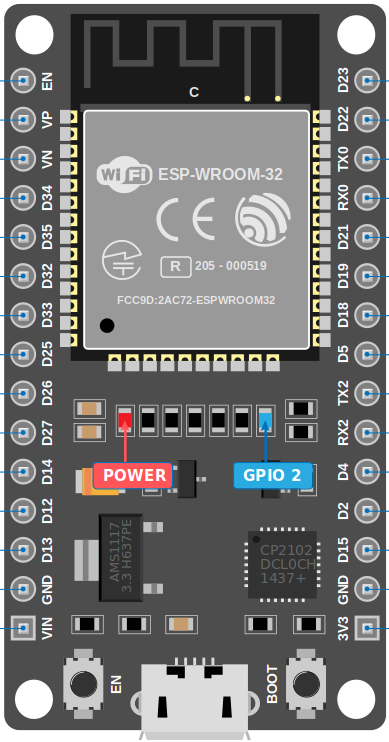
 Design with ESP32 Devkit V1 in Cirkit Designer
Design with ESP32 Devkit V1 in Cirkit DesignerIntroduction
The ESP32 Devkit V1, manufactured by Espressif, is a versatile microcontroller development board based on the ESP32 chip. It features built-in Wi-Fi and Bluetooth capabilities, making it an excellent choice for Internet of Things (IoT) applications, smart devices, and rapid prototyping. With its dual-core processor, low power consumption, and extensive GPIO options, the ESP32 Devkit V1 is suitable for a wide range of projects, from home automation to wearable devices.
Explore Projects Built with ESP32 Devkit V1
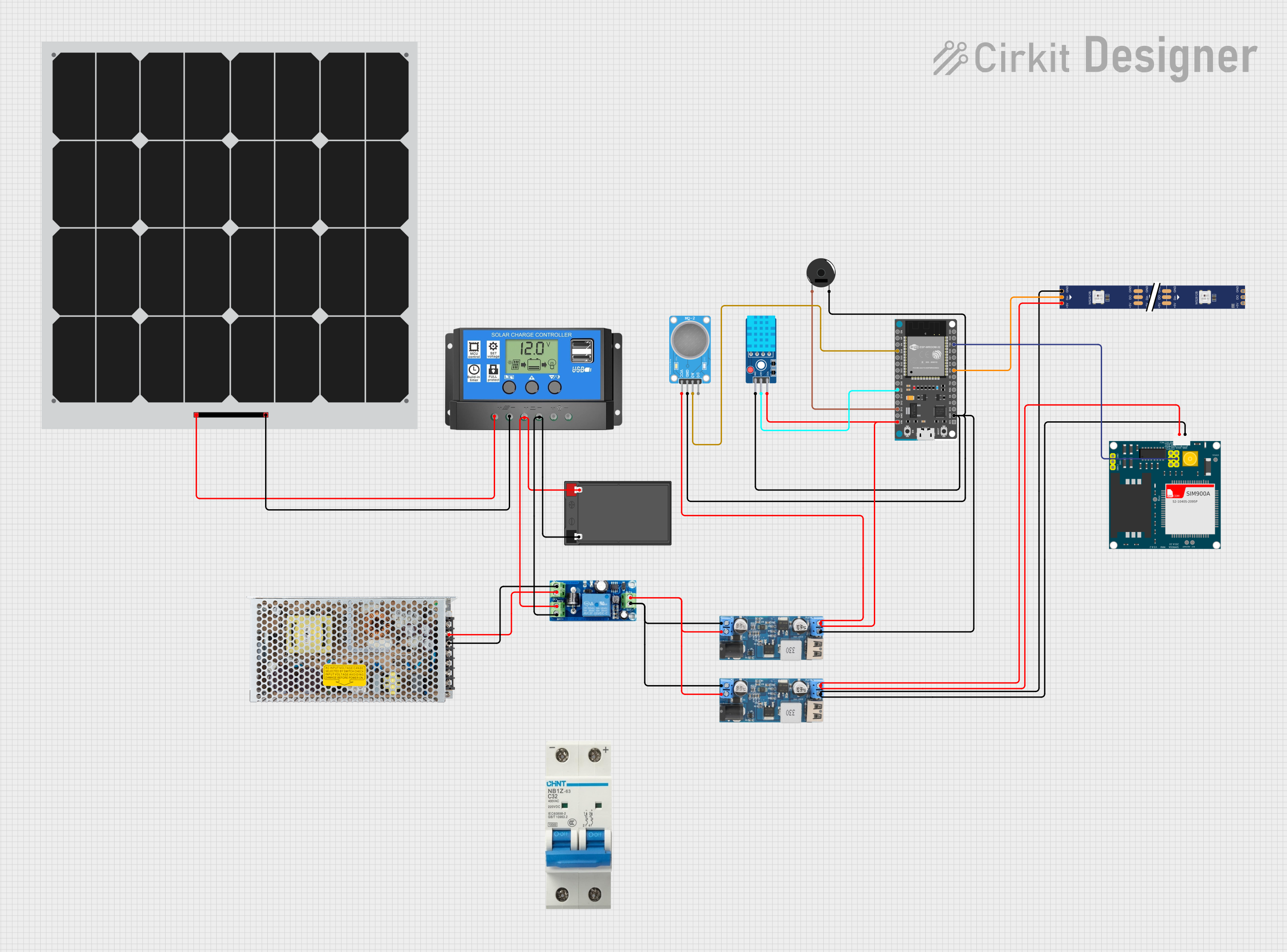
 Open Project in Cirkit Designer
Open Project in Cirkit Designer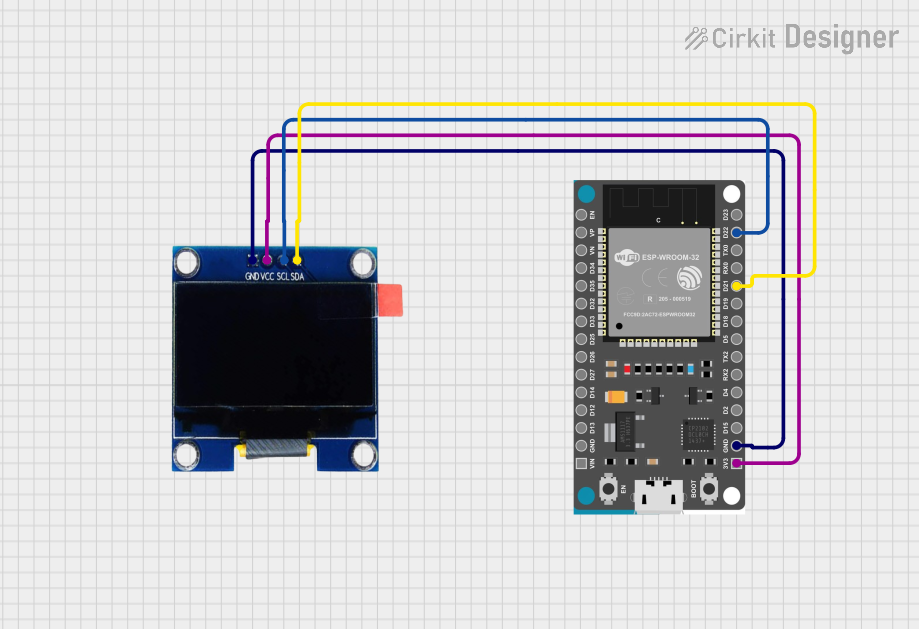
 Open Project in Cirkit Designer
Open Project in Cirkit Designer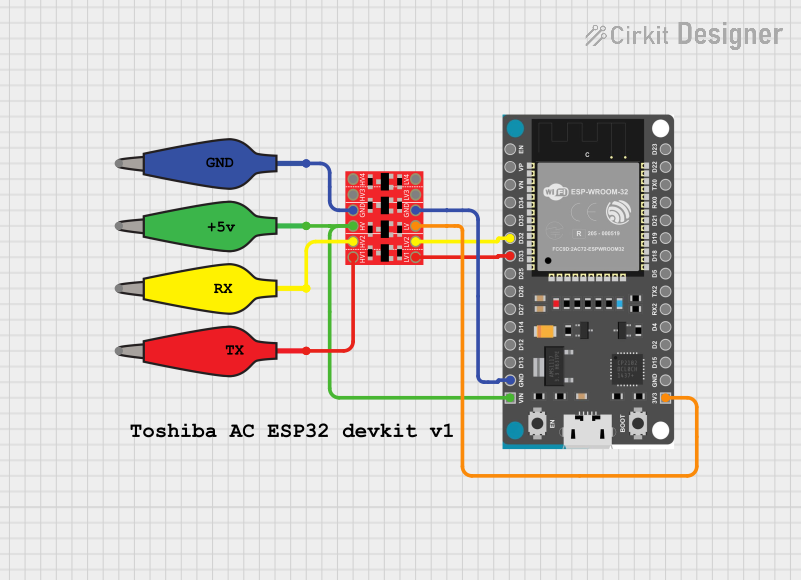
 Open Project in Cirkit Designer
Open Project in Cirkit Designer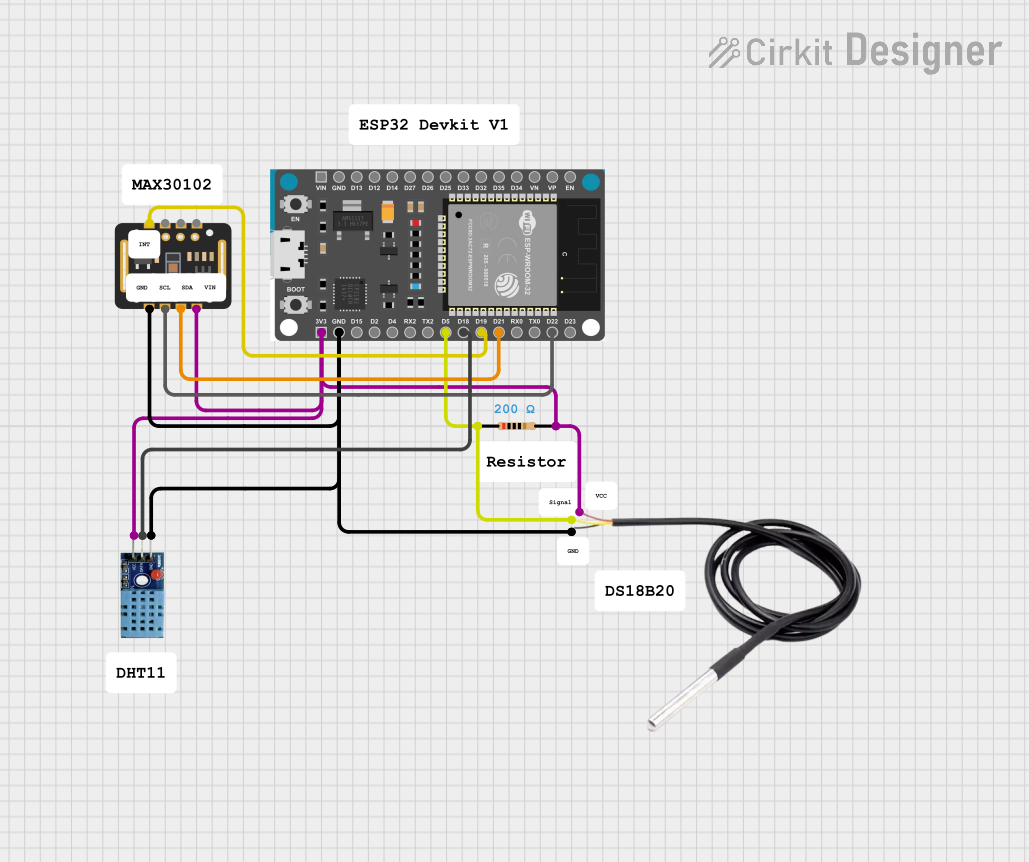
 Open Project in Cirkit Designer
Open Project in Cirkit DesignerExplore Projects Built with ESP32 Devkit V1

 Open Project in Cirkit Designer
Open Project in Cirkit Designer
 Open Project in Cirkit Designer
Open Project in Cirkit Designer
 Open Project in Cirkit Designer
Open Project in Cirkit Designer
 Open Project in Cirkit Designer
Open Project in Cirkit DesignerCommon Applications and Use Cases
- IoT devices and smart home systems
- Wireless sensor networks
- Wearable technology
- Robotics and automation
- Prototyping and educational projects
- Bluetooth Low Energy (BLE) applications
Technical Specifications
The ESP32 Devkit V1 is built around the ESP32-WROOM-32 module, which integrates a powerful dual-core processor and wireless communication features. Below are the key technical details:
Key Technical Details
| Parameter | Specification |
|---|---|
| Microcontroller | ESP32 (Xtensa dual-core 32-bit LX6) |
| Clock Speed | Up to 240 MHz |
| Flash Memory | 4 MB (varies by model) |
| SRAM | 520 KB |
| Wi-Fi | 802.11 b/g/n |
| Bluetooth | v4.2 BR/EDR and BLE |
| Operating Voltage | 3.3V |
| Input Voltage (VIN) | 5V (via USB or external power supply) |
| GPIO Pins | 30+ (varies by board version) |
| ADC Channels | 18 |
| DAC Channels | 2 |
| Communication Interfaces | UART, SPI, I2C, I2S, CAN, PWM |
| Power Consumption | Ultra-low power (varies by mode) |
Pin Configuration and Descriptions
The ESP32 Devkit V1 has a 30-pin layout. Below is a table describing the key pins:
| Pin Name | Pin Number | Description |
|---|---|---|
| VIN | 1 | Input voltage (5V) for powering the board. |
| GND | 2, 15 | Ground pins. |
| 3V3 | 3 | 3.3V output for powering external components. |
| EN | 4 | Enable pin. Pulling low resets the chip. |
| GPIO0 | 5 | General-purpose I/O pin; also used for boot mode selection. |
| GPIO2 | 6 | General-purpose I/O pin; often used for onboard LED. |
| GPIO12-39 | 7-30 | General-purpose I/O pins with various functions (ADC, DAC, PWM, etc.). |
| TX0 (UART) | 8 | UART0 transmit pin. |
| RX0 (UART) | 9 | UART0 receive pin. |
| ADC1_CH0 | 10 | Analog input channel 0. |
| DAC1 | 11 | Digital-to-analog converter channel 1. |
| SDA | 12 | I2C data line. |
| SCL | 13 | I2C clock line. |
Note: The exact pinout may vary slightly depending on the specific ESP32 Devkit V1 version.
Usage Instructions
How to Use the ESP32 Devkit V1 in a Circuit
Powering the Board:
- Connect the board to a computer or USB power source using a micro-USB cable.
- Alternatively, supply 5V to the VIN pin and connect GND to the ground.
Programming the Board:
- Install the Arduino IDE and add the ESP32 board support package.
- Select "ESP32 Dev Module" from the Tools > Board menu.
- Connect the board to your computer and select the appropriate COM port.
Connecting Peripherals:
- Use the GPIO pins to connect sensors, actuators, or other peripherals.
- Ensure that the voltage levels of connected devices are compatible with the 3.3V logic of the ESP32.
Uploading Code:
- Write your code in the Arduino IDE or another supported environment.
- Click the upload button to flash the code to the ESP32 Devkit V1.
Important Considerations and Best Practices
- Voltage Levels: The GPIO pins operate at 3.3V. Avoid connecting 5V devices directly to the pins without a level shifter.
- Boot Mode: To enter bootloader mode, hold the "BOOT" button while pressing the "EN" button.
- Power Consumption: Use deep sleep mode to minimize power consumption in battery-powered applications.
- Wi-Fi and Bluetooth: Avoid using both Wi-Fi and Bluetooth simultaneously in high-performance modes to reduce power draw.
Example Code for Arduino UNO Integration
Below is an example of using the ESP32 Devkit V1 to blink an onboard LED:
// Example: Blink onboard LED on ESP32 Devkit V1
// Define the GPIO pin connected to the onboard LED
#define LED_PIN 2
void setup() {
pinMode(LED_PIN, OUTPUT); // Set the LED pin as an output
}
void loop() {
digitalWrite(LED_PIN, HIGH); // Turn the LED on
delay(1000); // Wait for 1 second
digitalWrite(LED_PIN, LOW); // Turn the LED off
delay(1000); // Wait for 1 second
}
Tip: Replace
LED_PINwith the appropriate GPIO number if using an external LED.
Troubleshooting and FAQs
Common Issues and Solutions
Board Not Detected by Computer:
- Ensure the USB cable is functional and supports data transfer.
- Install the correct USB-to-serial driver (e.g., CP2102 or CH340).
Code Upload Fails:
- Check the selected COM port in the Arduino IDE.
- Hold the "BOOT" button while uploading the code.
Wi-Fi Connection Issues:
- Verify the SSID and password in your code.
- Ensure the router is within range and supports 2.4 GHz Wi-Fi.
GPIO Pin Not Working:
- Confirm the pin is not reserved for internal functions (e.g., GPIO0, GPIO2).
- Check for short circuits or incorrect wiring.
FAQs
Q: Can the ESP32 Devkit V1 run on battery power?
A: Yes, you can power the board using a 3.7V LiPo battery connected to the 3V3 and GND pins, or a 5V source connected to VIN.
Q: How do I reset the ESP32 Devkit V1?
A: Press the "EN" button to reset the board.
Q: Can I use the ESP32 Devkit V1 with MicroPython?
A: Yes, the ESP32 Devkit V1 supports MicroPython. Flash the MicroPython firmware to the board and use a compatible IDE like Thonny.
Q: What is the maximum range of the ESP32's Wi-Fi?
A: The range depends on environmental factors but typically extends up to 100 meters in open spaces.
For additional support, refer to the official Espressif documentation or community forums.